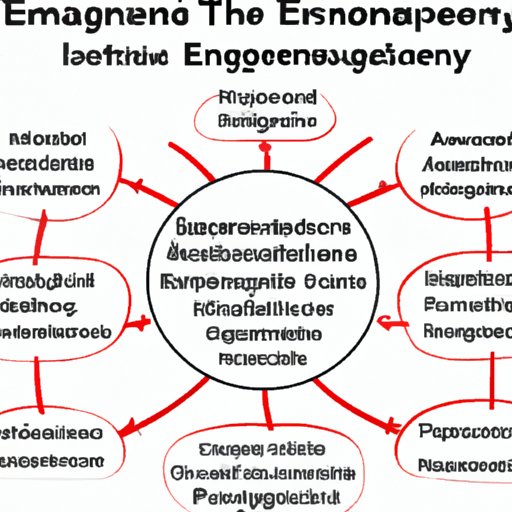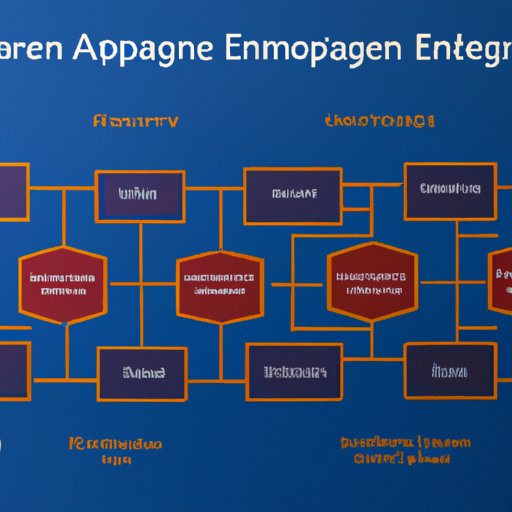Introduction
Enterprise architecture (EA) is a holistic approach to structuring an organization’s operations. It is a comprehensive framework that outlines the relationships between the various elements of a business, such as its processes, information systems, and technology solutions. By leveraging enterprise architecture, businesses can effectively manage their operations and ensure they remain competitive in today’s digital economy.
Definition of Enterprise Architecture
According to Gartner, “Enterprise architecture is the organizing logic for business process and IT infrastructure reflecting the integration and standardization requirements of the firm’s operating model.” In other words, enterprise architecture is the structure of an organization’s operations, which includes its processes, information systems, and technology solutions. It is designed to provide a unified view of the organization and its operations, allowing for greater efficiency and agility.
Benefits of Enterprise Architecture
The benefits of enterprise architecture are numerous. By leveraging enterprise architecture, businesses are better able to:
- Understand the impact of changes on the organization.
- Identify opportunities for improvement.
- Increase operational efficiency.
- Reduce costs.
- Improve communication between departments.
- Enhance customer experience.
Ultimately, enterprise architecture enables businesses to make informed decisions, identify areas of risk, and ensure they remain competitive in today’s digital economy.
A Comprehensive Guide to Enterprise Architecture
Understanding Digital Transformation
In order to understand the benefits of enterprise architecture, it is important to first understand the concept of digital transformation. According to a 2019 survey by Deloitte, “Digital transformation is the integration of digital technology into all areas of a business, resulting in fundamental changes to how businesses operate and deliver value to customers.” In other words, digital transformation is the process of integrating digital technologies into all aspects of a business, from its products and services to its internal operations. This process enables businesses to remain competitive in today’s digital economy, as digital technologies are becoming increasingly essential for success.
Exploring How Enterprise Architecture Can Help Your Business Grow
By leveraging enterprise architecture, businesses are better able to understand the impact of digital transformation on their operations. EA provides a comprehensive framework for understanding the relationships between the various elements of a business, such as its processes, information systems, and technology solutions. This allows organizations to identify opportunities for improvement and increase operational efficiency. Additionally, enterprises are able to reduce costs and improve communication between departments as a result of leveraging EA.
Examining the Relationship Between Enterprise Architecture and Business Strategy
It is also important to examine the relationship between enterprise architecture and business strategy. According to a study by the MIT Sloan School of Management, “Enterprise architecture is closely linked to business strategy. Companies use EA to align their IT investments with their strategic goals and objectives.” In other words, enterprise architecture enables businesses to ensure their IT investments are aligned with their overall strategic goals and objectives. This ensures organizations are able to maximize the value of their IT investments and remain competitive in today’s digital economy.
Leveraging Enterprise Architecture for Improved Operational Efficiency
Finally, enterprises are able to leverage enterprise architecture for improved operational efficiency. By providing a comprehensive framework for understanding the relationships between the various elements of a business, EA enables organizations to identify areas of inefficiency and develop strategies for improvement. Additionally, EA allows organizations to understand the impact of changes on their operations, enabling them to make informed decisions and ensure they remain competitive in today’s digital economy.

Key Components of Enterprise Architecture
There are several key components of enterprise architecture, including:
Software Architecture
Software architecture is the structure of an organization’s software systems. It outlines the relationships between the various components of the software, such as databases, user interfaces, and application programming interfaces (APIs). Software architecture enables organizations to identify opportunities for improvement and ensure their software systems remain efficient and up-to-date.
Data Architecture
Data architecture is the structure of an organization’s data. It outlines the relationships between the various components of the data, such as databases, data warehouses, and data lakes. Data architecture enables organizations to identify opportunities for improvement and ensure their data remains secure and up-to-date.
Infrastructure Architecture
Infrastructure architecture is the structure of an organization’s IT infrastructure. It outlines the relationships between the various components of the infrastructure, such as networks, hardware, and cloud computing. Infrastructure architecture enables organizations to identify opportunities for improvement and ensure their IT infrastructure remains secure and reliable.
Security Architecture
Security architecture is the structure of an organization’s security systems. It outlines the relationships between the various components of the security system, such as authentication, encryption, and access control. Security architecture enables organizations to identify opportunities for improvement and ensure their security systems remain up-to-date and effective.
Business Architecture
Business architecture is the structure of an organization’s business operations. It outlines the relationships between the various components of the business, such as processes, products, and services. Business architecture enables organizations to identify opportunities for improvement and ensure their operations remain efficient and effective.
Solution Architecture
Solution architecture is the structure of an organization’s solutions. It outlines the relationships between the various components of the solutions, such as software, hardware, and services. Solution architecture enables organizations to identify opportunities for improvement and ensure their solutions remain up-to-date and effective.
Conclusion
In conclusion, enterprise architecture is a comprehensive framework that outlines the relationships between the various elements of a business, such as its processes, information systems, and technology solutions. By leveraging enterprise architecture, businesses are better able to understand the impact of digital transformation on their operations, identify opportunities for improvement, and increase operational efficiency. Additionally, EA enables businesses to align their IT investments with their strategic goals and objectives, ensuring they are able to maximize the value of their IT investments. The key components of enterprise architecture include software architecture, data architecture, infrastructure architecture, security architecture, business architecture, and solution architecture. By leveraging these components, businesses are better able to ensure their operations remain efficient and effective.
Overall, enterprise architecture provides numerous benefits for businesses, from increased operational efficiency to improved customer experience. By understanding the benefits of EA and leveraging its key components, businesses are better able to remain competitive in today’s digital economy.
(Note: Is this article not meeting your expectations? Do you have knowledge or insights to share? Unlock new opportunities and expand your reach by joining our authors team. Click Registration to join us and share your expertise with our readers.)
